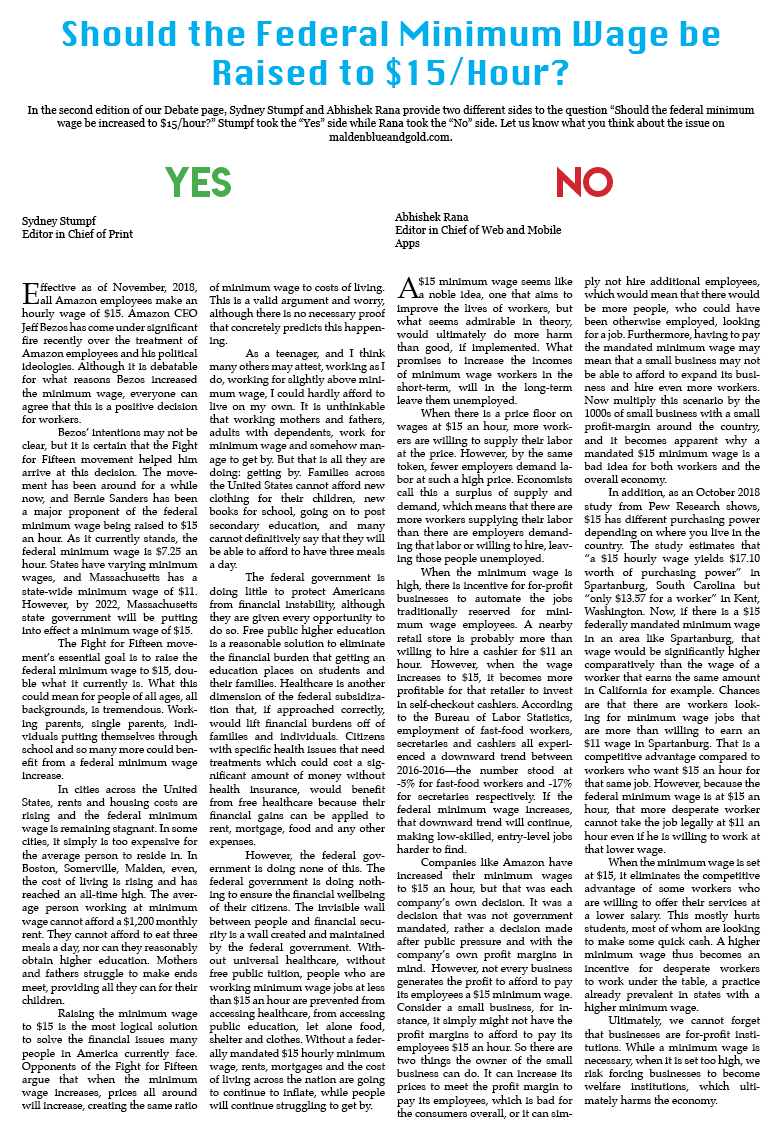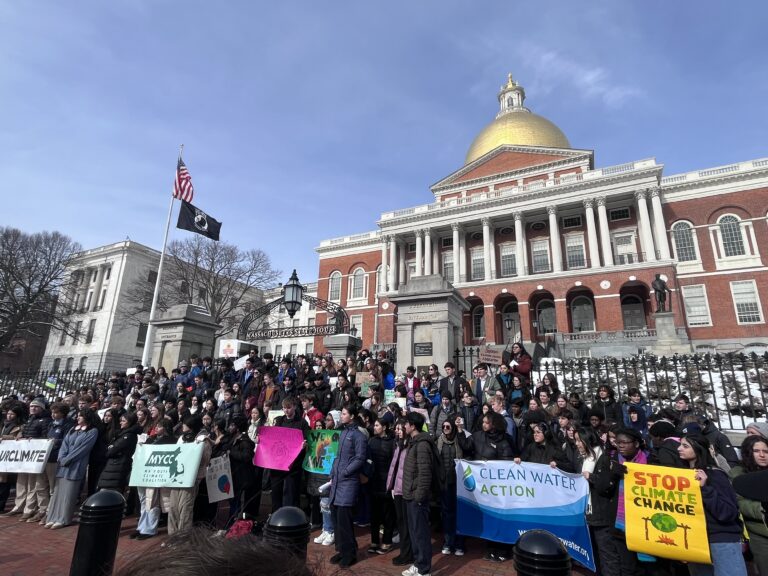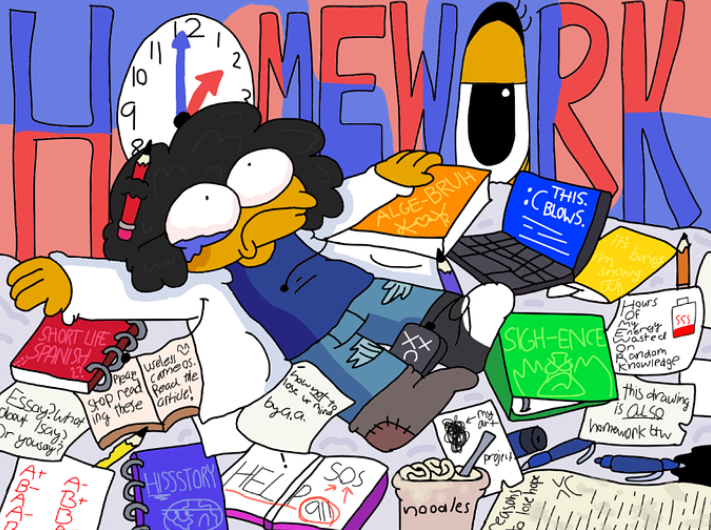
November debate page. Taken from the November 2018 print edition.

by Sydney Stumpf and Abhishek Rana
In the second edition of our Debate page, Sydney Stumpf and Abhishek Rana provide two different sides to the question “Should the federal minimum wage be increased to $15/hour?” Stumpf took the “Yes” side while Rana took the “No” side.
Yes: the federal minimum wage should be raised to $15 an hour.
Effective as of November, 2018, all Amazon employees make an hourly wage of $15. Amazon CEO Jeff Bezos has come under significant fire recently over the treatment of Amazon employees and his political ideologies. Although it is debatable for what reasons Bezos increased the minimum wage, everyone can agree that this is a positive decision for workers.
Bezos’ intentions may not be clear, but it is certain that the Fight for Fifteen movement helped him arrive at this decision. The movement has been around for a while now, and Bernie Sanders has been a major proponent of the federal minimum wage being raised to $15 an hour. As it currently stands, the federal minimum wage is $7.25 an hour. States have varying minimum wages, and Massachusetts has a state-wide minimum wage of $11. However, by 2022, Massachusetts state government will be putting into effect a minimum wage of $15.
The Fight for Fifteen movement’s essential goal is to raise the federal minimum wage to $15, double what it currently is. What this could mean for people of all ages, all backgrounds, is tremendous. Working parents, single parents, individuals putting themselves through school and so many more could benefit from a federal minimum wage increase.
In cities across the United States, rents and housing costs are rising and the federal minimum wage is remaining stagnant. In some cities, it simply is too expensive for the average person to reside in. In Boston, Somerville, Malden, even, the cost of living is rising and has reached an all-time high. The average person working at minimum wage cannot afford a $1,200 monthly rent. They cannot afford to eat three meals a day, nor can they reasonably obtain higher education. Mothers and fathers struggle to make ends meet, providing all they can for their children.
Raising the minimum wage to $15 is the most logical solution to solve the financial issues many people in America currently face. Opponents of the Fight for Fifteen argue that when the minimum wage increases, prices all around will increase, creating the same ratio of minimum wage to costs of living. This is a valid argument and worry, although there is no necessary proof that concretely predicts this happening.
As a teenager, and I think many others may attest, working as I do, working for slightly above minimum wage, I could hardly afford to live on my own. It is unthinkable that working mothers and fathers, adults with dependents, work for minimum wage and somehow manage to get by. But that is all they are doing: getting by. Families across the United States cannot afford new clothing for their children, new books for school, going on to post secondary education, and many cannot definitively say that they will be able to afford to have three meals a day.
The federal government is doing little to protect Americans from financial instability, although they are given every opportunity to do so. Free public higher education is a reasonable solution to eliminate the financial burden that getting an education places on students and their families. Healthcare is another dimension of the federal subsidization that, if approached correctly, would lift financial burdens off of families and individuals. Citizens with specific health issues that need treatments which could cost a significant amount of money without health insurance, would benefit from free healthcare because their financial gains can be applied to rent, mortgage, food and any other expenses.
However, the federal government is doing none of this. The federal government is doing nothing to ensure the financial wellbeing of their citizens. The invisible wall between people and financial security is a wall created and maintained by the federal government. Without universal healthcare, without free public tuition, people who are working minimum wage jobs at less than $15 an hour are prevented from accessing healthcare, from accessing public education, let alone food, shelter and clothes. Without a federally mandated $15 hourly minimum wage, rents, mortgages and the cost of living across the nation are going to continue to inflate, while people will continue struggling to get by.
No: The federal minimum wage should not be raised to $15 an hour.
A $15 minimum wage seems like a noble idea, one that aims to improve the lives of workers, but what seems admirable in theory, would ultimately do more harm than good, if implemented. What promises to increase the incomes of minimum wage workers in the short-term, will in the long-term leave them unemployed.
When there is a price floor on wages at $15 an hour, more workers are willing to supply their labor at the price. However, by the same token, fewer employers demand labor at such a high price. Economists call this a surplus of supply and demand, which means that there are more workers supplying their labor than there are employers demanding that labor or willing to hire, leaving those people unemployed.
When the minimum wage is high, there is incentive for for-profit businesses to automate the jobs traditionally reserved for minimum wage employees. A nearby retail store is probably more than willing to hire a cashier for $11 an hour. However, when the wage increases to $15, it becomes more profitable for that retailer to invest in self-checkout cashiers. According to the Bureau of Labor Statistics, employment of fast-food workers, secretaries and cashiers all experienced a downward trend between 2016-2026—the number stood at -5% for fast-food workers and -17% for secretaries respectively. If the federal minimum wage increases, that downward trend will continue, making low-skilled, entry-level jobs harder to find.
Companies like Amazon have increased their minimum wages to $15 an hour, but that was each company’s own decision. It was a decision that was not government mandated, rather a decision made after public pressure and with the company’s own profit margins in mind. However, not every business generates the profit to afford to pay its employees a $15 minimum wage. Consider a small business, for instance, it simply might not have the profit margins to afford to pay its employees $15 an hour. So there are two things the owner of the small business can do. It can increase its prices to meet the profit margin to pay its employees, which is bad for the consumers overall, or it can simply not hire additional employees, which would mean that there would be more people, who could have been otherwise employed, looking for a job. Furthermore, having to pay the mandated minimum wage may mean that a small business may not be able to afford to expand its business and hire even more workers. Now multiply this scenario by the 1000s of small business with a small profit-margin around the country, and it becomes apparent why a mandated $15 minimum wage is a bad idea for both workers and the overall economy.
In addition, as an October 2018 study from Pew Research shows, $15 has different purchasing power depending on where you live in the country. The study estimates that “a $15 hourly wage yields $17.10 worth of purchasing power” in Spartanburg, South Carolina but “only $13.57 for a worker” in Kent, Washington. Now, if there is a $15 federally mandated minimum wage in an area like Spartanburg, that wage would be significantly higher comparatively than the wage of a worker that earns the same amount in California for example. Chances are that there are workers looking for minimum wage jobs that are more than willing to earn an $11 wage in Spartanburg. That is a competitive advantage compared to workers who want $15 an hour for that same job. However, because the federal minimum wage is at $15 an hour, that more desperate worker cannot take the job legally at $11 an hour even if he is willing to work at that lower wage.
When the minimum wage is set at $15, it eliminates the competitive advantage of some workers who are willing to offer their services at a lower salary. This mostly hurts students, most of whom are looking to make some quick cash. A higher minimum wage thus becomes an incentive for desperate workers to work under the table, a practice already prevalent in states with a higher minimum wage.
Ultimately, we cannot forget that businesses are for-profit institutions. While a minimum wage is necessary, when it is set too high, we risk forcing businesses to become welfare institutions, which ultimately harms the economy.







